Category Archives: Uncategorized
New Girl, Same Old Sexism
In New Girl, Jess lives with four other male roommates: Winston, Coach, Schmidt, and her (then) ex-boyfriend Nick. In Season 4, Episode 7 “Goldmine”, to start the episode Jess announces that she will be bringing a guy home that night and the she is afraid of telling him that she lives with her ex. Though she is afraid of sharing this information with the new man, Nick explains how he uses it to his advantage with women. This shows a double standard between the way sexual histories are held against women and not men, as well as agency of men over women. Nick’s solution to the problem is to pretend that he is gay now, which is problematic in itself.



Meanwhile, two new neighbors moved in the loft next door. Winston tries to do nice things for them, in hopes that they will sleep with him. They are portrayed as two beautiful, ditzy and helpless girls. As soon as they open up the door, they are so grateful for Winston to be there because they could not have possibly of fixed the non-flushing toilet. Thank god there was a man there to save them. Not only are the women there to please the visual gaze of Winston and Coach, but they also represent the threat of a lack of a phallus. To satisfy castration anxiety Mulvey says, “The male unconscious has two avenues of escape this castration anxiety: preoccupation with the reenactment of the original trauma, counterbalanced by the devaluation, punishment, or saving of the guilty object” (Mulvey, 35). To exert male dominance and protect himself from castration, Winston tries to save the women from the failures of themselves.

Lastly, and possibly the worst of all, Schmidt is terribly upset with his ex-girlfriend (at the time) Cece, who considers breast reduction surgery to help her back pain now that she has insurance. He completely objectifies her and has total disregard for her well-being in order to preserve his male gaze. Mulvey argues that women are defined in film by being a passive bearer of the male gaze and men are the active lookers. Mulvey comments on such objectification of women, such as Schmidt reducing Cece to her breast size, “The determining male gaze projects its fantasy onto the female figure, which is styled accordingly. In their traditional exhibitionist role women are simultaneously looked at and displayed, with their appearance coded for strong visual and erotic impact” (Mulvey, 33). During her consultation with the doctor, Schmidt even barges in and asks to speak to one of her boobs, ignoring the woman they are a part of. It is a gross display of objectification, and I expect better from the writers of New Girl.

The Oscar’s Love the “White Savior” Complex
The Oscars have always been viewed as a highly valued award that a filmmaker/actor could possibly win. Every year the Oscar s are held and people look forward to seeing what movie is going to be the biggest winner of the night. Many people don’t look very deep into the films/people who are nominated for the award, many people just watch for their enjoyment. But when looking at what films and what people are nominated for an Oscar every year, you’ll notice a very prominent pattern.
s are held and people look forward to seeing what movie is going to be the biggest winner of the night. Many people don’t look very deep into the films/people who are nominated for the award, many people just watch for their enjoyment. But when looking at what films and what people are nominated for an Oscar every year, you’ll notice a very prominent pattern.
Black people and black film is a category that don’t receive nearly as much recognition as white people and white people films. But whenever films that heavily depict black people are nominated for an Oscar, the movie will most likely represent black people characters as being oppressed and the white person coming in to save them. The Blind Side is a film that has been nominated for an Oscar and it heavily revolves around the “white savior” complex. Julien Gignac writes in his piece “The Revenants White Savior Complex” “Inarritu’s sympathy for the indigenous people of the region … veers toward an exaltation of them as magical exceptions,” this also quotation could also be applied to the situation of the way black people are depicted in most of the films that the Oscar’s chooses to nominate. The Blind Side made it seem as if Michael, the young black man, was nothing until Leigh Anne came along to save him. Michael was portrayed as someone who was incompetent unless this white woman was by his side. Because the white woman took care of him, Michael was suddenly viewed as a human. The character of Michael more like a prop to glorify the role of the white woman.


Sandra Bullock won Actress of the Year because of her role as Leigh Anne and the film was nominated for best picture. Even after the film was released, it was the white woman who was praised for her role. The actor who played Michael, Quinton Aaron received hardly any awards for his role. The Oscar’s time and time again choose to nominate films where black people are nothing more than a sad story until a white person decides to save them.

Sources: “The Revenant’s White-Savior Complex” The Globe and Mail. January 21, 2016
Taki Taki. Wait…What??
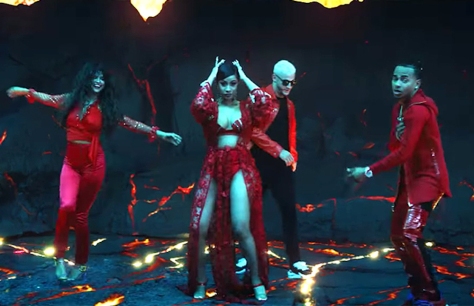
“Taki Taki” is a new song by Ozuna and DJ Snake featuring Cardi B and Selena Gomez. Although most of the song is in Spanish, it has become known in the United States. I guess Ozuna and DJ Snake can thank Cardi B and Selena Gomez for that. In the Hispanic culture Ozuna is a very well known Reggeaton singer. Reggeaton is a music genre that mostly (if not always) revolves around sex, and the sexualization of women. The music video for Taki Taki shows just that.
Music video
It’s not a secret that in our society sex sales. In the music video all of the women portrayed (including the female singers, Cardi B and Selena) are wearing revealing clothing. At one point of the video Ozuna seems to be in what looks like a pit surrounded by women wearing little to no clothing. One can only assume that that’s every mans “dream”, to be surrounded by women practically naked and at their dispose.

In my opinion, Taki Taki music video is a great example of male gaze according to Mulvey. In her article ‘Visual Pleasure and Narrative Cinema’, Mulvey says “The determining male gaze projects its fantasy onto the female figure, which is styled accordingly. In their traditional exhibitionist role women are simultaneously looked at and displayed, with their appearance coded for strong visual and erotic impact.” (pg.33) Every woman that is feature in the music video is shown/represented as a sex symbol. They use close ups to show specific parts of the women’s body that would be attractive to the male audience.
The music video isn’t the only thing about this song that sexualizes women. The lyrics aren’t any better. For one of Cardi B’s parts she sings, “No traje pantisito pa’que el nene no trabaje”- meaning she isn’t wearing any underwear, so he won’t have to “work” for it. As if our whole purpose is to make everything easier for men. Selena Gomez also sings an interesting lyric, “What my taki wants, my taki taki gets”- implying that by using her body she can get what she wants.
The word Taki Taki doesn’t have an actual meaning in Spanish. This song allows its audience to interpret the lyrics however they want. But with Selena’s part, one can only wonder if Ozuna was referring to the women’s privates. Although the lyrics are a bit controversial, they are very catchy, and the beat is amazing (thanks to DJ Snake).
Source: Laura Mulvey; Visual Pleasure and Narrative Cinema, Screen, Volume 16, Issue 3, 1 October 1975.
Media Example: White Savior Women
The White Savior Complex is a trope frequently found in popular cinema, where a white protagonist, character saves and/or rescues some person/persons of color from a troublesome situation. The idea of the white savior has been around since the dawn of white people but became popular from Rudyard Kipling’s poem, The White Man’s Burden. In the poem, he shares his beliefs of American/white imperialism and how it is a white man’s obligations to save and rule over people of color, as white people are more superior to them. White imperialism has obviously occurred all over the world for centuries, but more recently the idea made its way to Hollywood. And though the role of the White Savior mostly goes to men, Hollywood really loves White Savior Women. Just a few examples include Nicole Kidman in Lion, Sandra Bullock in The Blind Side, and Hillary Swank in Freedom Writers. All white women who goes above and beyond their white duty to help the life or lives of people of color. In The Blind Side, Bullock plays Leigh Anne Touhy. A good, Christian woman who takes it upon herself to take in and adopt a homeless black boy named Michael. Though Touhy claims that she didn’t shave him because he saved her, it was her belief in him the made him strive to his full potential and become a good student and athlete. Eventually becoming a professional football player and having all his dreams come true (due to a white woman’s actions). Swanks role in Freedom Writers, is of Erin Gruwell; a teacher who becomes assigned to a rundown high school with a student body of mostly people of color. But solely with her optimism and can-do attitude, she inspires her students to do better and helps each of them with their education and personal issues; immensely improving their lives more than they could ever do by themselves. In Lion, Kidman also plays a mother who adopts a POC; a young Indian boy named Saroo. Though her role is not as prominent as the other women, it is to be understood that she saved Saroo from his orphaned life in India and gave him the “Australian Dream” (like the American dream but Australian, similar because they are both a “white man’s dream”). Though these films are based off of true stories that are supposed to be “inspiring” and “uplifting”, Hollywood must move on from the White Savior complex in films and start telling more diverse, original stories.
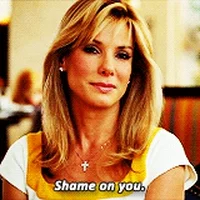
Oppositional Gaze BP: The big male gaze in The Little Mermaid
For my oppositional blog post, I will be analyzing the film The Little Mermaid and oh boy…
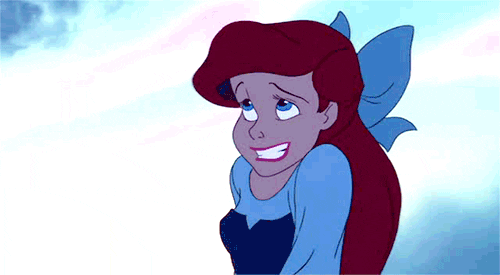
As I child, I grew up watching Disney films: Cinderella, Sleeping beauty, Snow White. But my favorite was always The Little Mermaid. The Little Mermaid tells the story of a 16 year old, mermaid and princess, named Ariel. She falls in love with a human prince, and risks everything to be with him at the cost of her mermaid body and above average singing voice. I thought these actions made her to be brave and independent, something I strived to be. Plus, I just wanted to be her, because everyone wants to be a mermaid, right? Other than seemingly bad-ass Ariel, I loved this movie because it was just plain fun and full of catchy songs; therefor I makes for a great children’s movie! Right?… Wrong. I went back and watched the beloved Disney film, now with an oppositional gaze, and it was brought to my attention that the film holds many problematic elements and themes. Really all Disney films in some way are problematic, except for Mulan because Mulan was just a straight-up bad-ass. But the majority of Disney films star a young, innocent girl to which the intended audience will see as a strong female character. Like I said before, growing up I saw Ariel as that strong female character. But looking at her now with an oppositional gaze, I can see that she falls short of that “strong female” role.
From the very beginning of the film, male gaze is prominent; just in the way the character appears. Ariel is only 16 years old but has the curvaceous body of an adult woman; Her waist is tiny, but a chest and hips for days lol. She has endlessly flowing, red hair; plump, red lips; and large, blue eyes. Why does a young girl, in a film for children, have to look so adult? Well as Laura Mulvey argued, women in film exist solely to be bearers of the male gaze of desire (Mulvey, 30-31).

Not just her appearance, but also her personality/persona is defined by male gaze – she is the “passive female” to the “active male” as Mulvey discusses. Though it could be argued that she does not take the passive role because of her defying her father, King Triton; In the film, her father bans her from going up to the surface to watch the human world, but she continues to do so because she has fallen in love with a human prince, Eric. She makes contact with him while saving him from drowning, to which her father punishes her for. In retaliation, she goes to the sea-witch Ursula, and signs away her voice for a pair of legs…
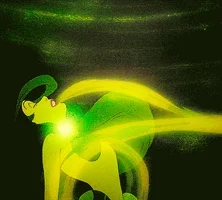
to be with Eric, a strange boy see literally does not know ugh. I used to believe that by defying her father, she was in a way challenging patriarchy and becoming her own independent woman. But in rewatching The Little Mermaid, I can see that her actions are in no way that “radical” because her actions are for another man. Ariel falls “in love” with a stranger whom she does not know but is interested in solely because his good looks and partly his dog Max (which tbh same).
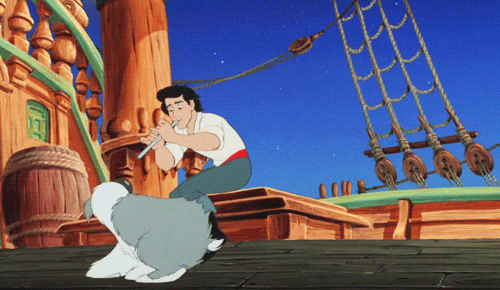
Not only does she fall in love with a man based on his looks, but she literally sacrifices her bad-ass mermaid body and heavenly voice to Ursula, in exchange for a pair of legs (a human body) to be with this man. It could be misconstrued to young viewers that this sacrifice appears as a brave, feminist-like move, but WRONG. She gives away what makes her, herself. And with no voice, Ariel is left with no way to communicate with Eric besides using her body (I mean she could have written him notes because she was obviously literate in that she signed Ursula’s contract, but that’s a whole other thing…). By having to use her body to win Eric affection, Ariel falls into Mulvey’s very definition of women in popular film; just a body to be looked at, and really an object of Eric’s fantasy – Because the he has the determining male gaze in the film, and the “determining male gaze projects its fantasy on to the female figure with is styles accordingly” to their liking. Something that he literally does when taking her in, having her groomed and dressed to his fancy.
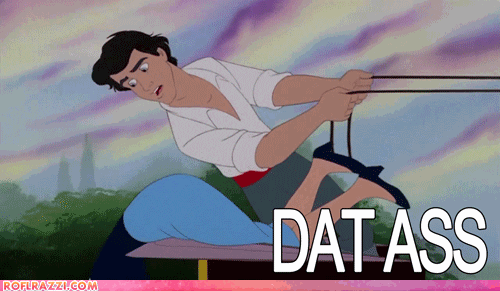
So what themes are children supposed to get from this film? That a woman should give up her voice for a man, and in return use her body to win his love? That she is no more than a body to be looked at? I understand that Disney might have intended for The Little Mermaid to have positive messages about independence and love and other crap, but it just sends the wrong message… Like most Disney films.
Looking into my other past favorite Disney films, such as Cinderella and Sleeping Beauty, it’s sad to see how all the main characters take the passive, exhibitionist role as a body to be looked at and displayed for the male gaze. Cinderella attracts prince Charming solely based on her physical appearance; thin, blonde, big eyes and bust, unrealistically tiny feet. Without really knowing her, he falls in love and sets out to find his mystery woman. And when he does, he saves her from her sad, unfortunate life with her cruel step-mother. Aurora, alike Cinderella and all Disney princesses, is blonde, thin, big eyes and ah yes… curvaceous. Though being the “main” character of Sleeping Beauty she has only 18 speaking lines in the film; because he presence is, once again, just a body to be looked at – a spectacle whose visual presence drives the narrative of the film. Which is the Prince saving her with “true loves kiss”. And going back full circle to The Little Mermaid – it is Eric in the end, who saves Ariel by slaying Ursula.
By rewatching my beloved childhood films with an oppositional gaze, I can now see how distorted many of the themes present in these films were – And just like other popular film, even Disney (and other childhood films) projects male gaze onto its female characters and uses them as a sexual object and erotic spectacle.
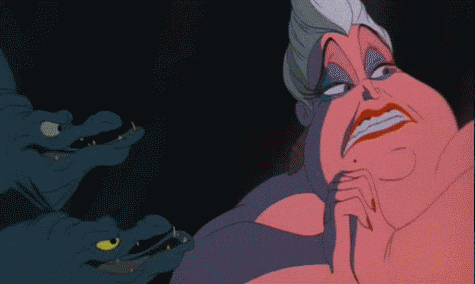
Mulvey, Laura. “Visual Pleasure and Narrative Cinema.” Issues in Feminist Film Criticism, 1990.
Blue is the Warmest Color Media Example
Bound Together demands to be complicated, asking internally on page 21 “Why can’t I demonize Bound?” It would be too much to demand of the author a prescience to know where the Wachowskis were personally situated in their authorship, living in the two gendered worlds. Theory, however, can be held to the standards of our time, and for this reason I think the revelation “Okay, Even Straight Men Can Do It” belongs to its moment in the catalog of outmoded feminisms. This is not just because the Wachowskis have transitioned, that to ask the question “can men think like women?” is now unfashionably binary, or because the point that support or subversion of hegemony are not gendered acts is old hat. The realization that the article comes to, for all these reasons and more, is barking up the wrong tree.
Quickly, media directed, written, and produced by lesbian women often reifies hegemonic tropes that do violence to other margins or even to other lesbian women. This does not mean that these artifacts should not be celebrated as queer media or enjoyed by queer people. I unfortunately have consumed and enjoyed many problematic flicks like But I’m a Cheerleader or Itty Bitty Titty Committee or The L Word or the subtly douchey Boys Don’t Cry. Many pieces of media, like all of these, were directed by queer women, yet they perpetuate fantastical and extremely marketable ideas of what lesbian life is like.
Blue is the Warmest Color, a french film about lesbian love, is hot. It won the Palme d’Or. The film is considered one of the best from 2013. It is also haunted by terrible production stories. It was directed by a straight cis man who abused the two female leads throughout filming, pushing them far past comfort for the project. After backlash, Abdellatif Kechiche asked whether he had to be a woman to tell this story. And yes–he tells the story competently. That is not the problem. It is a story about a lesbian love turned sour, falling to pieces. It is complex and uncompromising in giving these characters life as human beings whose lives have intertwined and come undone on screen. However, what the story does is a different matter from what it shows.
Lesbian life is not glamorized, which one might suppose is the entire draw to a movie of this kind. The women experience infatuation and distance with bags under their eyes and it feels real. This is not often what a project of this kind would set out to do (and often enough, a lesbian director might not be given the opportunity to attempt something so adventurous on the studio’s dime). Of course a man could direct a lesbian love movie. But why the fuck should he? Film criticism loves the idea of the auteur, which doesn’t exist. Kechiche did not make a critically successful film until his third release in 2007. Aside from showing the world that, yes, a white, straight, cis man with loads of money can do whatever he wants with the stories of queer women (and aside from reproducing the unhappy queers trope), Blue is the Warmest Color refocuses on realism as the source of its appeal when it should be trying to craft a story that is true in other ways too.
Marketability is not the mark of an auteur. We get a slick new sheen without any purpose. It’s not Kechiche’s story to tell, so it’s false in that way. Unlike the Wachowskis, he is not attached to womanhood in that way. Leaving the “truth” of gender aside, what the movie says is disingenuously sober. What purpose is there in him telling this story now? We get an image of female sexuality free of the male frame. So what? That should not be revolutionary in 2013. Yes, “even straight men can do it,” they always could. Who tells the story is not nearly as important as why they tell it. The same text means different things when it is released in different contexts by different authors.
Media Example: 17 Magazine Reality Models
In 2012, 17 Magazine made a vow to never retouch any of the faces or bodies of the women and girls in their magazine. They wanted only “real” girls within the pages of the magazine and because of this would never alter them in order to display what true women look like. This is exactly what Racquel Gates warns about when talking about reality TV as she states “reality TV masks itself as documentary, which straightforwardly presents, rather than represents, people and situations” (Gates, 143). 17 Magazine is claiming they are no longer representing women but are “presenting” women, in their true forms without anything hiding.
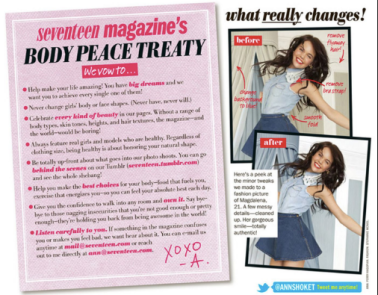
I want to be very clear when I say I do not think that un-retouched models are a bad thing, in fact I am 100% for un-retouching models and celebrating natural beauty. What I do not agree with is the statement that since 17 Magazine is no longer photo-shopping the models, they are showing us what “real” looks like. There are so many more factors that go into staging a scene such as camera angles, clothing, props that could hide little details that don’t want to be seen, deciding which pictures actually go into the magazine, and many more things. Mulvey calls this “mise-en-scene” meaning placing on stage.


^Further examples of real pictures but are staged to get that ~perfect~ look
17 Magazine claims that the photos within their magazine are completely real and represent their models, but just because they are not airbrushing faces or shaping bodies does not mean this is 100% true. There are many more elements that go into the production of photos just like there are many elements that go into the production of reality television. While I fully support models without any retouching and applaud companies that have taken this approach, I do not feel they should be claiming that no editing is going into these photos just like reality TV cannot claim it is completely real and unedited.
Sources:
Class Readings-
Laura Mulvey “Visual Pleasure and Narrative Cinema”
Racquel Gates “Keepin’ it Reality Television”
Outside Sources:
http://thechive.com/2018/08/14/the-stupid-lengths-people-go-to-for-the-perfect-picture-20-photos/
Colliding with Oneself
The figure I am constantly colliding with is the AMAB gender rebel. Whether it is Dustin Hoffman in Tootsie or James McAvoy in Split, there is a terror behind this transgression–a resentment and disgust in audiences who fear the thought that they too could take on this despised form of the feminine man. In Joanna Russ’ novel, The Female Man, this transgression is observed by the cast of lesbian separatists as male intrusion in the female world. Even in more favorable portrayals of transness, such as in Laurence Anyways, or Boys Don’t Cry, or Don’t Call Me Son, the spectacle is always in the process of becoming rather than the status of being. This frame is terrifying still, not for the threat of castration occasionally read into the hatred of the trans- womanhood, for the worry of exposure or illegitimacy. The house of cards of femininity must be on the verge of toppling.
I have been thinking a lot about self-hatred. A short Vice documentary from 2018 follows the life of an ex neo-nazi named Dajana as she seeks transgender surgery in Serbia. She is despised by the nazis who were once her allies and the queer community who was once her enemy. Dajana disappeared shortly after the interviews were conducted. The fascination with transness and nazism drew Vice to tell her story. None of these sources are what I will talk about in this post. I will be talking about The Believer (2001) starring Ryan Gosling.
Daniel Balint is a young man who was raised Jewish until he started questioning his faith. Discontented by a lack of answers, he turns to a group of neo-nazis for community, becoming their de facto leader after demonstrating his knowledge, charisma, and deep-seated anger with Judaism. As Danny is placed in increasingly sacrilegious situations, he feels the drive to protect relics and save lives from the violent hatred that he supports in theory. Eventually he is discovered by a handful of characters to be Jewish-born, to hold some traditions sacred.
Self hatred is core to this movie. A very quick example, Danny describes the sexual deviance of Jewish men as pleasure-obsessed, centered on oral sex. They are supposedly more effeminate because of this interest. Later in the movie, when he asks why Carla likes him more than the fascist Curtis, she responds, “the sex is better.” This demonstrates a trait that Danny despises in himself, his jewishness. The movie even opens with Daniel chasing and attacking a boy with Hebrew school books. The music increases impossibly upward in tempo as the conflict grows.
The movie complicates all of this, offering little solution to serious theological and personal concerns that Daniel raises. In a flashback that is repeated several times throughout, he opines during a lesson on Abraham sacrificing Isaac, saying that God commands Abraham to kill his son not to test faith but to demonstrate irresistible power, “because I am everything and you are nothing.” He believes that Abraham kills Isaac, that God did not intervene. He stands and asks God to strike him down, prove that what he says is blasphemy–prove that God exists.
Later, Carla becomes sympathetic to Judaism, saying that the choices God gives are to “resist and be crushed, or submit and…” at which point Daniel says, “be crushed.” Carla offers that, “maybe that is the highest pleasure we can aspire to. To be crushed into nothing.” Nothingness being Danny’s absolute fear. Divine silence is what drives Danny out of temple, drives him to seek answers in the skinhead gang. The scene when he begs to be struck down is repeated at the climax of the movie, as Danny prays in the synagogue he bombs after evacuating everyone except for himself.
He rejects the effeminate and the Jewish. He forwards hateful rhetoric, becoming a popular recruiting tool for both the fascist and nazi movements. Above all he commits and incites violence. All of this in a search for answers. He dies embodying both the Nazi (bombing the synagogue) and the Jew (leading the absent congregation in reading from the Torah). Moreover, in the final scene of the film Daniel is caught in limbo forever ascending stairs as his teacher tells him that he was right about Isaac dying, that there is nothing upstairs. The movie condemns him, but it is also fascinated by him. A journalist follows him periodically, aware of his Jewish origins, hoping to write about him in The New York Times.
It is true that we are fascinated by the repulsive. It is also in this fascination that we construct repulsiveness. What Danny does in search of answers kills him and is more than unsettling. He cannot escape himself and this drives him into great rages. Carla asks him to hit her during foreplay, later appearing with a bruise in that spot. The sick fascination that media has with nazis is no less repulsed by gender transgression. There are relations to be found in self-hatred across violence, but I am interested in how sympathy is similarly transitive for a range of non-normative violators, including those whom we might say are doing something legitimately wrong in violence.
This comparison is not just mental–housed the moods of the films I am considering. Laurence Anyways involves betrayal and transness together, Laurence’s partner leaving mid way through transition. The audience is not forced into sympathy as in the experiment The Believer subjects its viewers to. There is a calm detachment from Laurence as Fred, the female partner, becomes uninterested. The tagline is “WILL THE WOMAN HE WANTS LOVE THE WOMAN HE WANTS TO BE?” People love its arthouse style while forgetting its lack of trans actors, directors, and influences. Laurence Anyways is melancholic and beautiful but far less substantial than The Believer. Both movies have a divided fanbase. The first film being loved mostly by film snobs and a smattering of media-hungry queers. The latter is loved by inattentive neo-nazis and overly forgiving liberals. And the fans have tended to be more sympathetic towards Daniel than Laurence, according to the reviews.
Conversations about self-hatred must be had, but they could be conducted more therapeutically. We must examine the source of anger and disgust in order to extinguish the hatred that is directed towards the margins because of it.
“Contact” and Scientists
Introduction
For my Oppositional Blog post, I chose to look through the oppositional lens from several perspectives: the perspective of the movie ‘Contact” and how it’s creators came to it’s final form, the oppositional presentation of the lead character Ellie Alloway ( relative to cultural norms at the time)`, from my oppositional gaze in being a non-traditional scientist during the same time frame, and also from an oppositonal gaze from today, and what the film portrays and embodies for women in general, and women scientists in particular.
The movie “Contact” (1997) with Jodie Foster as Eleanor ” Ellie” Arroway, an astrophysicist who focuses on the Search for Extraterrestial Intelligence (SETI, is one of my all time favorite movie. It has a strong feminist lead, science, science fiction, and an overt tension between the themes of “science” and “religion”. Matthew McConaughey plays Palmer Ross, a “man of the cloth”, and an advocate for faith in God, based on his personal experiences.
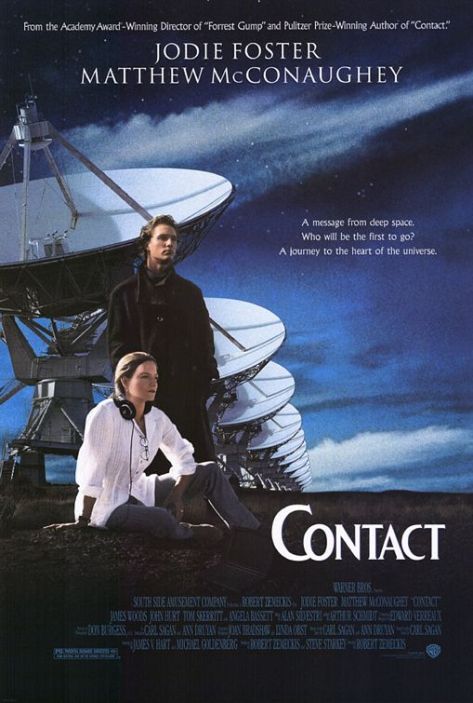
Photo 1: Poster for the movie ” Contact”
The movie is loosely based on the scientist Jill Tarter, and Tarter and Foster worked together for months preparing for the movie, working on accuracy and realism in Foster’s portrayal.
As a bit of background: “Tarter earned a Bachelor of Engineering Physics degree as an undergraduate at Cornell University and as the only woman in the engineering program. Her professional interest in astronomy emerged as she pursued a Master’s degree and PhD at the University of California at Berkeley.[5][6][7] It was in her PhD thesis where she coined the term “brown dwarf” while researching small-mass objects that fail to stably fuse hydrogen.” ( Wikipedia, Jill Tarter)

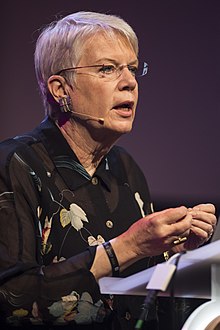
Photo 2: Professor Jill Tarter
In many ways, as a scientist myself, I have found this almost the perfect movie, as it envisions a strong role for Dr. Arroway which is neither male dependent, male focused, or male validated. In fact, in most of her interactions with both men and women, Arroway clearly uses the “oppositional gaze” as described by Bell Hooks, although from a more privileged position as a white woman. She is a strong role model, in that she does not waiver from her belief system, and believes in herself as a person with agency and the will to follow through on her belief system and her career choices.
Examples of her opposition gaze starts with some of her initial interactions with Palmer Ross, in which she clearly advocates for her belief system of “science”, while Palmer Ross advocates for “religion”, in the form belief in a god. Arroway shows no inclination to alter her belief system, and strongly maintains her positon, until a diathesis at the end, in which she has to integrate her belief in science with her own personal experience of having gone on a journey in time that even in the film is strongly doubted, with some possible evidence being an 18 minutes of silence taped while she was absent from contact with scientists on earth.
Synopsis of Film
Let me give a brief synopsis of the film, to provide some context for the ideas being examined in this blog. Ellie Arroway is a young scientist who became fascinated with the idea of extraterrestial life and space when her father and she developed the hobby of contacting various locations in the world via radi0
frequency, while simultaneously learning the planets and stars in the galaxy. He died when she was very young, and she went on to follow her interests in science, obtaining a Ph.d in aerospace, with a focus on SETI. She and Palmer Ross meet while she is on her first NSF project in Puerto Rico, and begin an ideological and personal romantic dance through time. Her Grant funded science project entails listening to radio sounds from space to determine a pattern indicating intelligent life.
However, the plug is pulled on the project by her boss and later nemesis. But just before Arroway and her team leave Puerto Rico, radio sounds are heard in the space region known as Vega. Arroway continues to seek funding, and eventually receives surprise funding from a reclusive multibillionaire, S.R. Hadden, who is known to support innovative projects. This funding allows Arroway and her team to continue to rent time on the Very Large Array (VLA) facility in New Mexico, which has 27 large radio antenna dishes for montitoring space. After several years if listening for further communication, a message is sent from Vega, which with much work is finally decoded as plans for a machine, presumably for space travel. Questions of faith continue to emerge during the film, as no one is sure what the plans for the machine are actually meant to build, or once built, what the machine will do.
However, because of paranoia about National Security, because Vega sends back an earlier message that was sent out with Hitler speaking at the Olympics (before he manifested the evil he is now known for) the government takes over, with James Woods as Michael Kitz,as the National Security Advisor. Kitz’s assistant, Rachel Constantine (Angela Basset) is the only other prominent woman character in the film.
The space travel machine is built in Cape Canavral. Arroway is thrwarted as the first space traveler by a selection committee in which Palmer Ross inquires about her belief in God. This raises consternation within the selection committe on whether she is representative of the country. Her sabotage nemesis and former boss instead is selected by telling the committee what it wants to hear, proclaming his belief in God. However, religious zealot Joseph (Jake Busey) blows up the spacecraft in Cape Canarval, believing space travel threatens religious beliefs.
Luckily, S.R. Hadden had already secretly built a second time travel machine, in which Arroway eventually travels through a worm hole to another dimension. However, the space craft never leaves earth, but there is an 18 minute recording of static, during the minute the capsule Ellie was in dropped to the ground. In the end, Arroway is forced to integrate that although there is no scientific proof of her journey, she still believes she traveled in time and talked with a space alien presented as the form of her father. The alien tells her this is the first step in the contact with other beings in the universe. Interestingly, the two main characters who find her story interesting and credible are Rachel Constatine and Palmer Ross.
This leads to my favorite quote of all time. When the movie first came out, I paused my VCR copy at least 20 times, writing out this quote:
“Senator: You come to us with no evidence, no record, no artifacts. Only a story that, to put it mildly, strains credibility… Are you really going to sit there and tell us that we should just take this all on faith?
Ellie Arroway: Is it possible that it didn’t happen? Yes. . . . As a scientist I must concede that. I must volunteer that.
Kitz: Then why don’t you simply withdraw your testimony and admit that this journey to the center of the galaxy, in fact, never took place?
Arroway: Because I can’t. I had an experience. I can’t prove it. I can’t just explain it. But everything that I know as a human being, everything that I am tells me that it was real. I was given something wonderful, something that changed me forever: a vision of the universe that tells us undeniably how tiny and insignificant and how rare and precious we all are. A vision that tells us that we belong to something that is greater than ourselves, that we are not – that none of us is alone. I wish I could share that emotion, that everyone, if even for one moment, could feel that awe and humility and that hope that I felt, but… that continues to be my wish.” ( Ellie ALloway, COntact, 1997.)
Analysis
There are many many more textures and levels to this movie, than the inital premise of a dialetical tension between science and religion. As noted earlier, I consider myself a scientist, with a MS in both Chemistry and Nursing. In this movie, Arroway is the only woman clearly presented as a scientist.
As Greg Smith noted in his article ” It’s just a movie”: ” Ok, we get a sense of what the directors concious intentions are, what ideological beliefs she gains from her socialization and what her unconscious issues are (an admittedly difficult process), then we have arrived at a well grounded, comprehensive description of what the film is trying to communicate, right” (p. 130)
In the context of what the directer is trying to convey, interestingly, there was a significant amount of conflict between writers, directors, and Carl Sagan, the very well know scientist who wrote the book “Contact”. Sagan and Ann Dryun (later to become his wife), wrote a 100 + page film treatment for the movie. Dryun explained:
“ Carl’s and my dream was to write something that would be a fictional representation of what contact would actually be like, that would convey something of the true grandeur of the universe.” Wikipedia, (Contact, 1997 Anerican Film).
However, the producer, Peter Gruber, wanted to make a very different story.
“Guber suggested that Arroway have an estranged teenage son, who he believed would add more depth to the storyline. Guber said:
“ Here was a woman consumed with the idea that there was something out there worth listening to, but the one thing she could never make contact with was her own child. To me, that’s what the film had to be about.” ( Wikipedia, 1997 American FIlm).”
Luckily this idea was trashed, primarily because Sagan and Dryun rejected it. Another director was hired, and the movie indeed became a model of a scientist in the 60’s. But was it representative? Did it do anything to support or encourage the role of women in science? As was noted in the movie, and in my experience in a BS and MS program in Chemistry, there were very few women in what was considered the “hard” sciences of chemistry, physics, math, and astrophysics in the 60’s, 50’s, indeed in any time before perhaps the mid-90’s, if even then.
I began college in 1970, and in my first year of chemistry classes, a beginning chemistry program for “advanced” students, I was the only woman. There were more women in the general chemisty classes, as pre-reqs for nursing, medicine, etc. But, by the time I arrived in the later chemistry degree related courses, there was only one other woman and me, from a probable degree pool of 25-30 students per grade level. Her goal was to become a chemistry teacher. My goal was to become a doctor, or pharmacologist. In the master’s program in chemistry, in which there were 12 of us, there were again only 2 women. My goals continued the same. The other woman wanted to do forensic chemistry. Interestingly, both women and I talked often, mostly about science, sometimes about Dungeons and Dragons, and sometimes about getting together for parties. I can definately say our relationships were collaborative, not competitive, and in fact in each relationship, we mutually indicated having another woman present in a sea of males was crucial to our making it through the programs.
As a side note on feminism at that time, which was still in it’s developing stage, women and relationships with other women were considered in a binary sense. Women helped and collaborated with other women, or they competed with them, or, in one case for me with an older woman scientist mentor, made sure other women had it as difficult as they had it with male mentors.
This paucity of women scientists in the 1970’s-1990’s coincides with the representation of women scientists in the film “Contact”. Is that sufficient to make it a feminist film? No. Does it support more women becoming scientists, yes. It demonstrates it is possible to have agency, a career, and make break throughs in science. Is that enough? Maybe, for the time period.
While reading another blog post, a class member (Mackpage88) mentioned the concept of the Bechdel test, in which:
1. Two women are in the film
2. The two women need to talk to each other
3. The two women need to talk to each other about something other than a man (“Bechdel Test”, 2018)
I iniitially thought about about “Contact”, and could remember no women scientists as being present in the movie. I later remember Arroway had asked for advice on finding a dress from another woman after one set of National Security meetings, and since the dress was to impress Palmer Ross, I was afraid the movie did not pass the Bechdel test. However, I did look into this further. It was representative of the times, but disappointing. Arroway did consult with another woman, Constantine,who was on the National Security Committee.
” Ellie Arroway : Mrs. Constantine? May I have a word with you?
Rachel Constantine : Certainly.
Ellie Arroway : Um, I have a big problem.
Rachel Constantine : Yes?
Ellie Arroway : Uh, do you know where I can find like a really great dress?(Contact (1997): Angela Bassett: Rachel Constantine,Wikipedia)
However, I then remembered someone on the security council had been supportive of Alloway. Interestingly, and not surprisingly, it was Rachel Constantine, the only other prominent female in the film.
Rachel Constantine : I assume you read the confidential findings report from the investigating committee.
Michael Kitz : I flipped through it.
Rachel Constantine : I was especially interested in the section on Arroway’s video unit. The one that recorded the static?
Michael Kitz : Continue.
Rachel Constantine : The fact that it recorded static isn’t what interests me.
Michael Kitz : [pauses] Continue.
Rachel Constantine : What interests me is that it recorded approximately eighteen hours of it.
Michael Kitz : [leans forward so he is looking directly in the camera] That is interesting, isn’t it? (Contact (1997): Angela Bassett: Rachel Constantine,Wikipedia)
As a result of these conversations, and attitudes, I can conclude “Contact” does not, or just barely passes the Bechedel test. I have also used my own “oppostional gaze” to evaluate the movie ” Contact”, using various readings from class. ” Contact” continues to be one of my favorite movies. It was also controversial in its time, using various news clips including one from President Clinton, and hiring CNN newscasters to provide authenticity to the movie.
This is deliberate designing of the appearance of a documentary is similiar to a technique discussed in class about films, in which various techniques are used to make a film seem more like a documentary. And indeed, these clips do make the film have more of a sense of being authentic, and in that sense support the notion of strong women scientists with a good sense of agency as a possibility.
I learned something I had not been aware of while researching this film; that Alloway was based on a real life person, Jill Tarter. Indeed there were leaders in the field science already doing good work when I thought I was one of the few women in science. A movie like ” Contact” does keep on giving, in this sense, as I continue to learn more and more about women who were and are active scientists, but just not represented in the media.
It also still strongly supports one of my premises, that in works of science fiction, the structures of reality may or may not be represented, but often there is thinking outside of the “reality” box. Characters can take on different roles, characters can begin to write “future texts” (Cartier, Summer 2014)of how we would like to see many more women in society.
Future blog topics that bear further investigation include: women in science: hard science versus “soft science”, does filmography that may be representative of an era in a specific segment of time do justice to women and feminists, or are many women scientists kept behind the scenes; impact of mainstream movies such as ” Contact” on the feminist movement; the role of black women in science.
References
Cartier, Nina. “Black Women on Screen as Future Texts: A New Look at Black Pop Culture Presentations”. Cinema Journal, VOl 53, Number4, Summer 2014, pp. 150-157.
Hooks, Bell. (2202)” The Oppositional Gaze: Black Female Spectators”.In Black Looks: Race and Representation, 115-131.
Mulvey, Laura(1975) ” Visual Pleasure and Narrative Cinema.” Screen 16,6-18.
Smith, Greg. (2001). ” It’s just a Movie”. A Teaching Essay for Introductory Media CLasses.” Cinema Journal 41(1), 127-134.
“Contact:1997. Angela Bassett: Rachel Constantine”.Wikipedia, Wikimedia Foundation, 25 Oct. 2018. https://en.wikipedia.org/wiki/Angela_Bassett
“Bechdel Test.” Wikipedia, Wikimedia Foundation, 24 Oct. 2018,
https://en.wikipedia.org/wiki/Bechdel_test.
“Contact (1997 An American Film. Wikipedia, Wikimedia Foundation, 25 Oct, 2018. https://en.wikipedia.org/wiki/Contact_(1997_American_film)
” Jill Tarter” .Wikipedia, Wikimedia Foundation, 24 Oct. 2018,
https://en.wikipedia.org/wiki/Jill_Tarter
References from: “Contact (1997 An American Film. Wikipedia, Wikimedia Foundation, 25 Oct, 2018. https://en.wikipedia.org/wiki/Contact_(1997_American_film)
Carl Sagan (October 1985). Contact: A Novel. New York City: Simon and Schuster. p. 432. ISBN 0-671-43400-4.
“Ann Druyan”. Warner Bros. Archived from the original on 2000-10-18. Retrieved 2009-02-01. Carl and I wrote the more than 100-page treatment in November of 1980…”
References from ” Jill Tarter” .Wikipedia, Wikimedia Foundation, 24 Oct. 2018,
https://en.wikipedia.org/wiki/Jill_Tarter
“EASTCHESTER HS/Alumni Association HALL OF FAME INDUCTEES” (PDF). Retrieved 22 February 2018.
Scoles, Sarah (2017). Making Contact: Jill Tarter and the Search for Extraterrestrial Intelligence. New York, NY: Pegasus Books. ISBN 9781681774411.
Cosier, Susan. “10 Questions for Jill Tarter, Astronomer”. Science Friday. Science Friday Initiative. Retrieved 6 February 2018.
Koren, Marina. “Jill Tarter, Feminist Cosmic Icon”. The Atlantic. Hayley Romer. Retrieved 6 February 2018.




